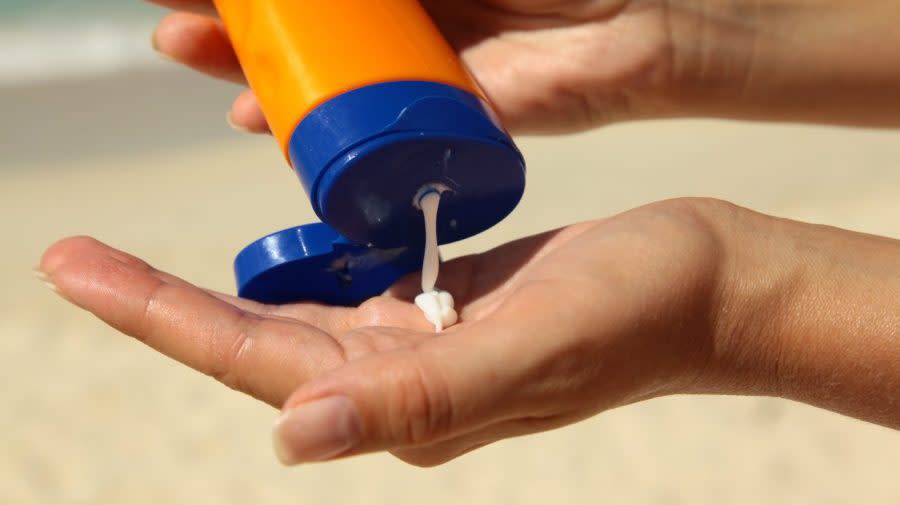Sunscreen vs. sunblock: What’s the difference, and which should you use?

Story at a glance
The Food and Drug Administration prohibited manufacturers from identifying their products as sunblocks in 2011.
Some products could be considered sunblocks because of their active ingredients, however.
Physical sunscreens containing zinc oxide and titanium dioxide are generally considered to be better at blocking UV rays
(NEXSTAR) — Summer is officially upon us (the summer solstice fell on Thursday), and many of us have already been feeling the heat.
If you’re among those who have been trapped in the heat dome, or just spending time in the sun recently, you may have found yourself at a beach, splash pad, park, or other outdoor space. Wherever you’ve been, you may have also found yourself applying a sun protectant.
When it comes to picking a bottle or can of a sun protection product, you’ll have to make a choice: sunscreen or sunblock.
That may have prompted a natural question: Is there even a difference?
The short answer is yes — but it’s also “in the semantics,” Dr. Shilpi Khetarpal, a dermatologist with Cleveland Clinic, tells Nexstar. More specifically, it’s about the composition of the ingredients.
‘Do not put your children in blue bathing suits’ viral TikTok warns
Notably, you won’t (or shouldn’t) see any products labeled as “sunblock” at the store. In 2011, the Food and Drug Administration barred manufacturers from identifying their products as sunblocks “because these claims overstate their effectiveness.”
That being said, there are some products that could be considered sunblocks based on their active ingredients.
“Zinc oxide and titanium dioxide, those function more as a shield, and they reflect the sun rays off,” Khetarpal says, explaining that these are sometimes known as physical sunscreens. They are generally considered to be better at blocking the UV rays.
Other sunscreens, or chemical sunscreens, work more like sponges, according to Khetarpal. The ingredients work to absorb the sun and essentially break it down, preventing us from having negative effects.
If you use a physical sunscreen (those with zinc oxide and titanium dioxide), you’ll likely notice it’s a bit thicker and can leave a white sheen.
iOS 18: Which iPhones won’t be able to get Apple’s next update?
If you are more prone to burning in the sun, or have a history of skin cancer, Khetarpal recommends using a sunscreen with zinc oxide and titanium dioxide over other products. The same goes for those with fair skin, including infants.
You may also want to — or need to — reach for those products over chemical sunscreens.
In recent years, parts of Hawaii and Key West have banned two chemicals found in sunscreen, oxybenzone and octinoxate, as a way to help protect the island’s marine ecosystem.
It’s worth noting that oxybenzone and octinoxate are among a group of chemicals commonly used in sunscreen that are not considered GRASE, or “generally recognized as safe and effective” by the Food and Drug Administration. Instead, the agency says “additional data is needed to show” sunscreens containing the chemicals “are GRASE.”
The FDA notes, however, that this does not mean oxybenzone and octinoxate are unsafe to use in sunscreens. More information is necessary to determine whether they are GRASE. The Centers for Disease Control and Prevention advises using sunscreens with less than 5% of either.
Zinc oxide and titanium dioxide are considered GRASE ingredients because the FDA “has found sufficient safety data … to support a proposal that sunscreen products containing these ingredients (at concentrations of up to 25%) are GRASE.”
Why this week’s heat wave could be next summer’s normal
Regardless of whether you’re using a physical or chemical sunscreen, Khetarpal recommends looking for one that is broad spectrum with an SPF of at least 30. If you’re going to be swimming or sweating, you may also want to opt for a sunscreen that is water-resistant.
Don’t look for “waterproof” or “sweatproof” on the label, though.
When the FDA banned the use of “sunblock” in 2011, it also determined manufacturers couldn’t claim to be either waterproof or sweatproof, since it overstates the product’s effectiveness.
Companies can claim to be water-resistant, but they have to include “whether the sunscreen remains effective for 40 minutes or 80 minutes while swimming or sweating, based on standard testing,” the FDA said.
Copyright 2024 Nexstar Media, Inc. All rights reserved. This material may not be published, broadcast, rewritten, or redistributed.
For the latest news, weather, sports, and streaming video, head to The Hill.


